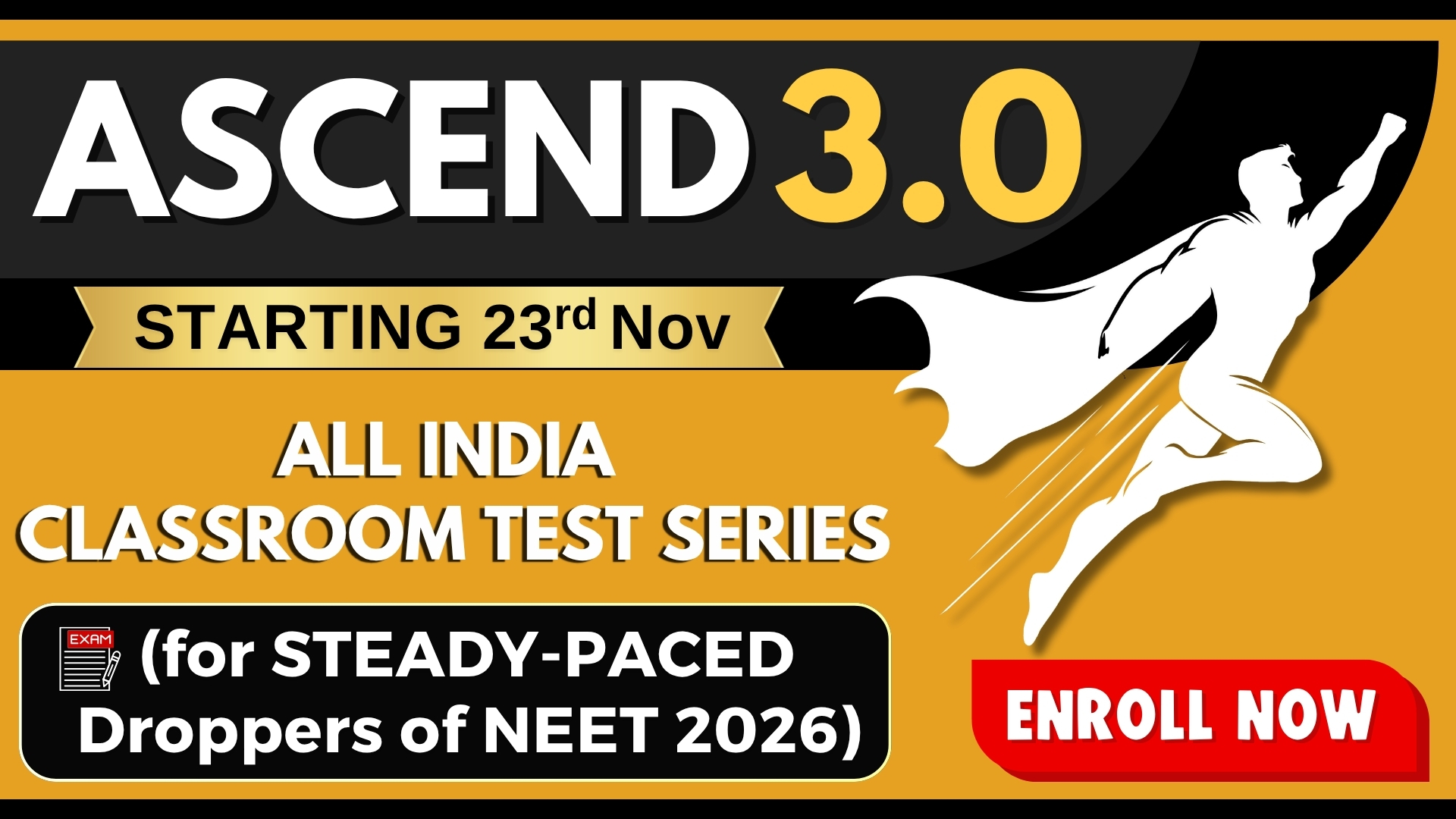Identify the biome that is not correctly matched with the physical parameters given in corresponding Column II and Column III:
Biome
Mean annual temperature [OC]
Mean annual precipitation [cm]
1.
Tropical forest
20 – 25
130 – 430
2.
Arctic and alpine tundra
-12 – 2
10 – 125
3.
Coniferous forest
-5 –5
100 – 200
4.
Temperate forest
8 – 22
50 – 225
Biome
Mean annual temperature [OC]
Mean annual precipitation [cm]
1.
Tropical forest
20 – 25
130 – 430
2.
Arctic and alpine tundra
-12 – 2
10 – 125
3.
Coniferous forest
-5 –5
100 – 200
4.
Temperate forest
8 – 22
50 – 225
The most ecologically relevant environmental factor is:
| 1. | Temperature | 2. | Water |
| 3. | Light | 4. | Soil |

To unlock all the explanations of 38 chapters you need to be enrolled in MasterClass Course.

To unlock all the explanations of 38 chapters you need to be enrolled in MasterClass Course.
The extent of geographical distribution for eurythermals and stenothermals is expected to be:
1. Equal for both
2. Larger for the former
3. Smaller for the former
4. Cannot be predicted

To unlock all the explanations of 38 chapters you need to be enrolled in MasterClass Course.

To unlock all the explanations of 38 chapters you need to be enrolled in MasterClass Course.
If global warming continues, how would the distributional range of some species be affected?
1. There will be a poleward shift
2. There will be an equatorial shift
3. No change is expected for any species
4. There will be shift from land to marine water

To unlock all the explanations of 38 chapters you need to be enrolled in MasterClass Course.

To unlock all the explanations of 38 chapters you need to be enrolled in MasterClass Course.
The salt concentration [measured as salinity in parts per thousand] for inland waters is:
1. Less than 5
2. Between 5 and 15
3. 30 – 35
4. More than 100

To unlock all the explanations of 38 chapters you need to be enrolled in MasterClass Course.

To unlock all the explanations of 38 chapters you need to be enrolled in MasterClass Course.
Organisms that are tolerant for a wide range of salinity are called:
| 1. | Stenohalines | 2. | Euryhalines |
| 3. | Halophytes | 4. | Stenothermals |

To unlock all the explanations of 38 chapters you need to be enrolled in MasterClass Course.

To unlock all the explanations of 38 chapters you need to be enrolled in MasterClass Course.
Small plants [herbs and shrubs], growing in forests, are usually adapted to photosynthesize optimally under:
1.Very high light conditions
2.Very low water conditions
3.Very high water conditions
4.Very low light conditions

To unlock all the explanations of 38 chapters you need to be enrolled in MasterClass Course.

To unlock all the explanations of 38 chapters you need to be enrolled in MasterClass Course.
Photoperiod affects:
1. Plants only
2. Animals only
3. Both plants and animals
4. Neither plants nor animals

To unlock all the explanations of 38 chapters you need to be enrolled in MasterClass Course.

To unlock all the explanations of 38 chapters you need to be enrolled in MasterClass Course.
Which of the following algae is likely to be found in the deepest waters?
1.Green
2.Brown
3.Red
4.All are found at equal depths

To unlock all the explanations of 38 chapters you need to be enrolled in MasterClass Course.

To unlock all the explanations of 38 chapters you need to be enrolled in MasterClass Course.
Thermoregulation and osmoregulation can be achieved by all:
1. Amniotes
2. Birds and mammals
3. Vertebrates
4. Chordates and insects

To unlock all the explanations of 38 chapters you need to be enrolled in MasterClass Course.

To unlock all the explanations of 38 chapters you need to be enrolled in MasterClass Course.






